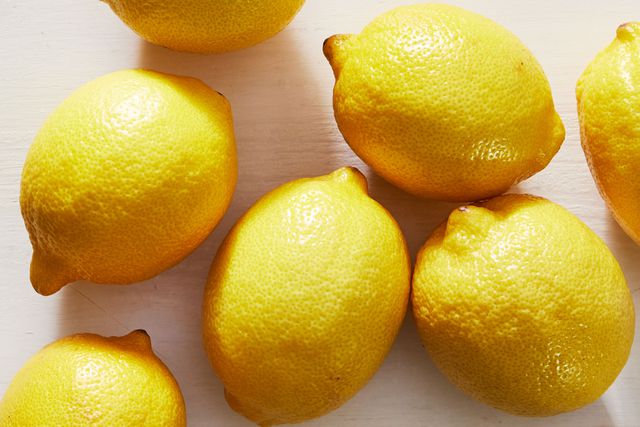And it costs less than $1!
Everyone loves a comforting bowl of chicken soup – especially hard-to-beat classics like chicken and dumplings or chicken noodle soup. I truly believe there is no better medicine than a warm bowl of healing chicken soup when you feel a cold coming on.
Whether you’re making a traditional chicken soup that starts with mirepoix, trying out a new medley of ingredients using rotisserie chicken, or relying on store-bought broth, there is one simple ingredient that will enhance your dish: lemon. Juice, zest, or both! Your recipe might even already call for it.
Many recipes use lemon in the beginning of the recipe, but for soup, you’ll want to wait and add the lemon towards the end of the cooking process to retain its vibrancy. Start with the juice or zest of half a lemon, then add more as desired.
Why You Should Add Lemon To Chicken Soup
First off, lemon and chicken are a classic ingredient pairing. It’s like cornbread and collards, biscuits and jam, or Clairee and Ouiser. You get the point, the two just go perfectly together! From crowd-favorites like chicken piccata and lemon pepper wings to the endless roasted and baked lemon chicken recipes, you can’t go wrong with this combination – especially in soup.
Aside from the match-made-in-heaven, the real reason you should be adding lemon to chicken soup is because of its acidic properties. If you look at almost any soup recipe (or most recipes in general), you’ll find they all have something in common: some type of acidic ingredient whether it’s citrus, vinegar, or tomato. Not only does acid brighten your soup, but also balance the flavor including the saltiness that comes from the broth (store-bought chicken broth and stock, or bouillon, are typically high in sodium).
An additional reason for elevating your chicken soup with lemon rather than other acidic ingredients is the health benefits. Lemons are high in vitamin C, help with digestion, and are full of antioxidants. Many soup recipes are made with good-for-you, healing ingredients and lemon fits right into that.
How Adding Acid Balances A Dish
You probably weren’t looking for a whole cooking lesson, but you’re about to get one anyway! When looking at any recipe, it’s all about the unique balance of flavors and how the ingredients mingle to create the perfect dish without overpowering each other. While individual ingredients offer their own flavor, the way they come together results in the taste we experience: salty, sweet, sour, savory, or umami.
On their own, acidic ingredients, like lemons and limes, are often associated with sour and tart; however, when you add them to a dish, they enhance, or brighten, the other flavors. When seasoning a pot of soup, you’re probably reaching for more salt and pepper. But if your recipe already has enough salt and still doesn’t taste quite right, it’s likely because it needs an acidic component.
Lemon Juice vs. Lemon Zest
The juice is what brings the tartness and acidic properties to balance flavors, while the zest (or skin of the lemon) contains the essential oils which is where you get all the beautiful aromatics. The zest gives you lots of lemon flavor without the acidity of the juice. When zesting citrus, be sure to wash it first. Personally, I love using both in my soups because you are enhancing the recipe and getting maximum flavor.
How To Add Acidity Without Lemons
Now, if you don’t have any lemons on-hand or simply don’t like the taste, vinegar is an easy alternative. There are so many varieties and each offers different characteristics and flavor profiles, but the chances are high you have at least one type of vinegar already in your pantry (balsamic, white wine, red wine, sherry, rice vinegar, or apple cider) and a splash is all you really need.
This article was written by Cameron Beall from Southern Living and was legally licensed through the DiveMarketplace by Industry Dive. Please direct all licensing questions to legal@industrydive.com.







